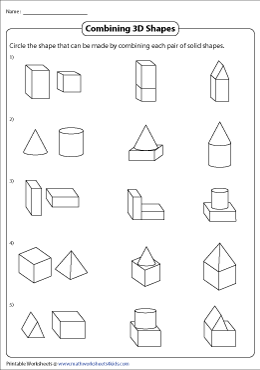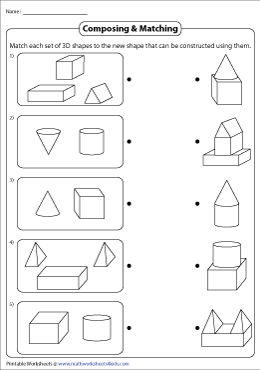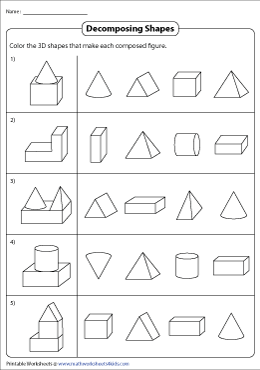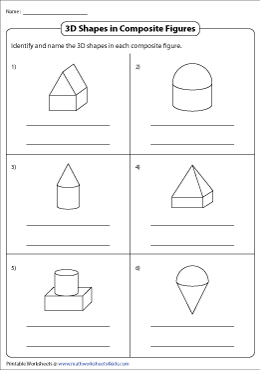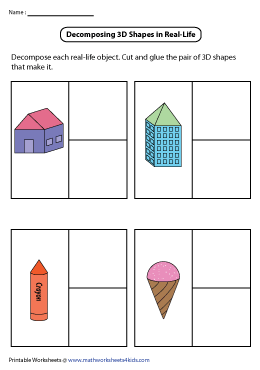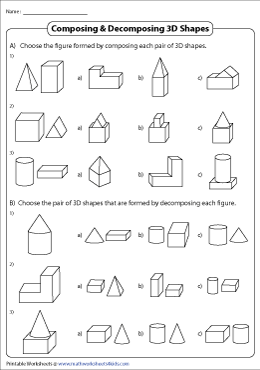- Worksheets>
- Math>
- Geometry>
- 3D Shapes>
- Composing 3D Shapes
Composing 3D Shapes
Composing 3D shapes worksheets are all about exploring how 3D figures fit together to form larger shapes and how they can be broken down to form smaller shapes. Nurture curiosity in kids of kindergarten, grade 1, and grade 2, build their power of imagination and visualization, as they work their way through exercises such as choosing the 3D figure constructed by combining 3D figures, decomposing real-life objects to identify the solids that make up the shape, and more! Try our free worksheet to kick start your journey.
Combining 3D Shapes
Give wings to your little architects' imagination as they mount a triangular prism on a rectangular prism, or attach a cone to a cylinder. Identifying and circling the new composite shapes created is all they do in this pdf.
Composing and Matching 3D Shapes
Kindergarten and grade 1 kids fuse the 3D figures in each set, hunt for the new shape constructed, and match the individual shapes with the new combined shape in this printable composing and matching 3D shapes worksheet.
Decomposing Combined Shapes into 3D Shapes
Watch kids take pride in their discovery of solids that go into making the combined shape as they break down each shape, and color the 3D figures in this printable decomposing combined shapes worksheet.
Identifying 3D Shapes in Composite Figures
Challenge your little architects to detect the common 3D shapes that make up each of the composite figures and name them in this worksheet where 3-dimensional shapes are stacked in different fashions.
Decomposing Real-Life Objects | Cut and Glue Activity
Does the image of a house remind you of a triangular prism mounted on a rectangular prism? Split up many such images in this decomposing real-life objects pdf, cut and glue the solids that make up each.
Composing and Decomposing Shapes | MCQ
Opt for this 1st grade and 2nd grade pdf that is a perfect combo of putting together and splitting up 3D shapes to make new shapes. Identify the composed shape in Part A and the decomposed shapes in Part B.

